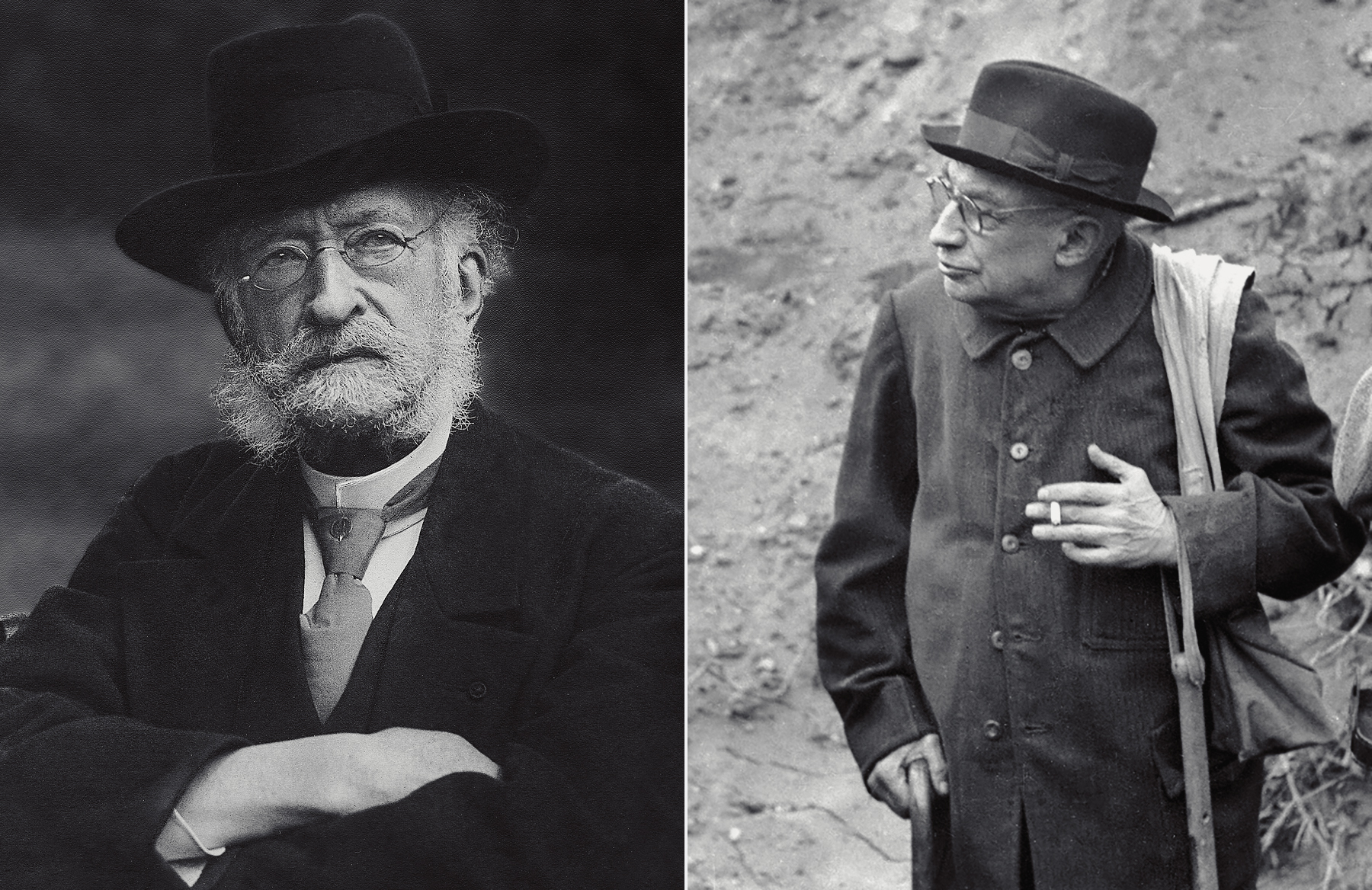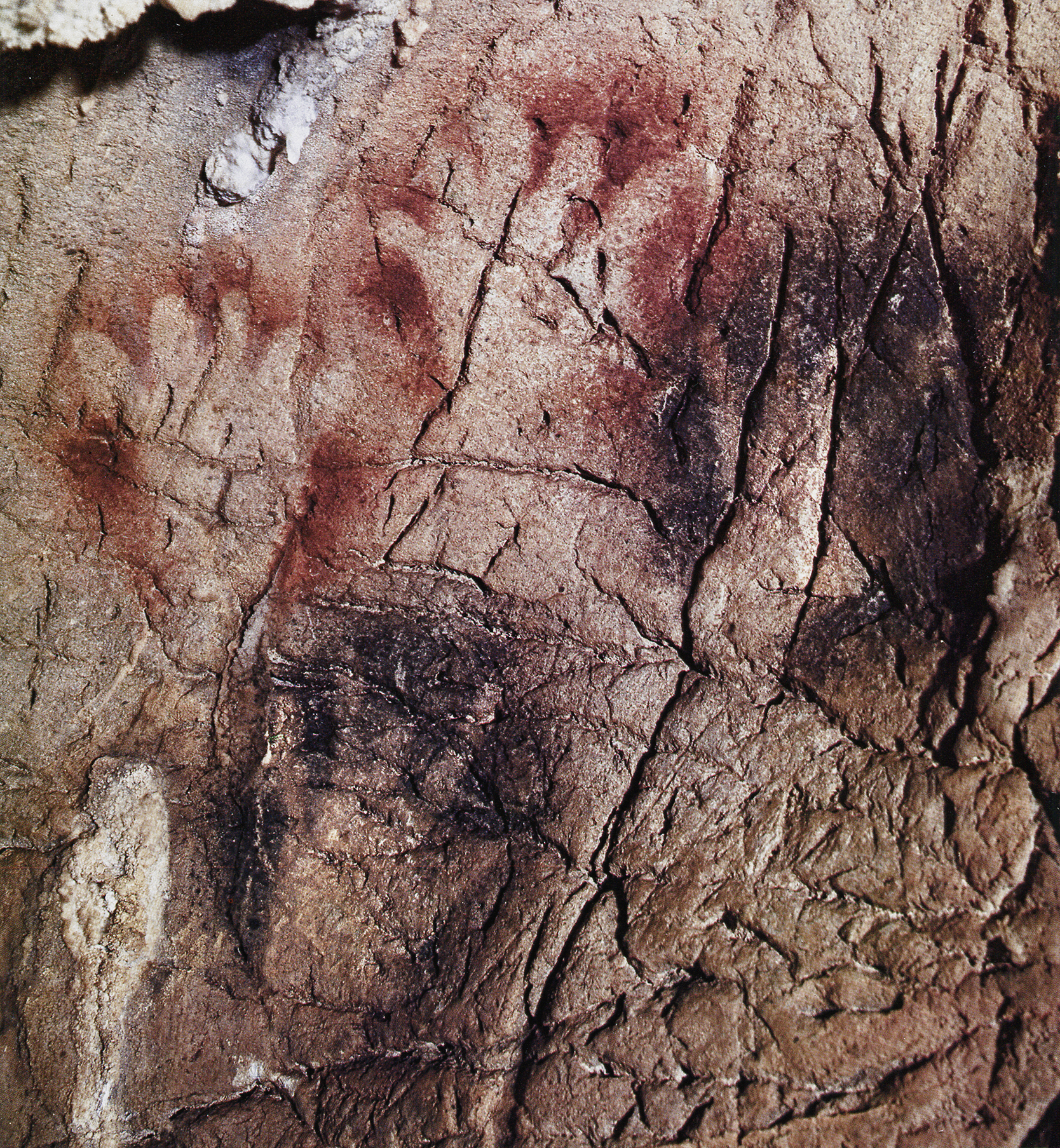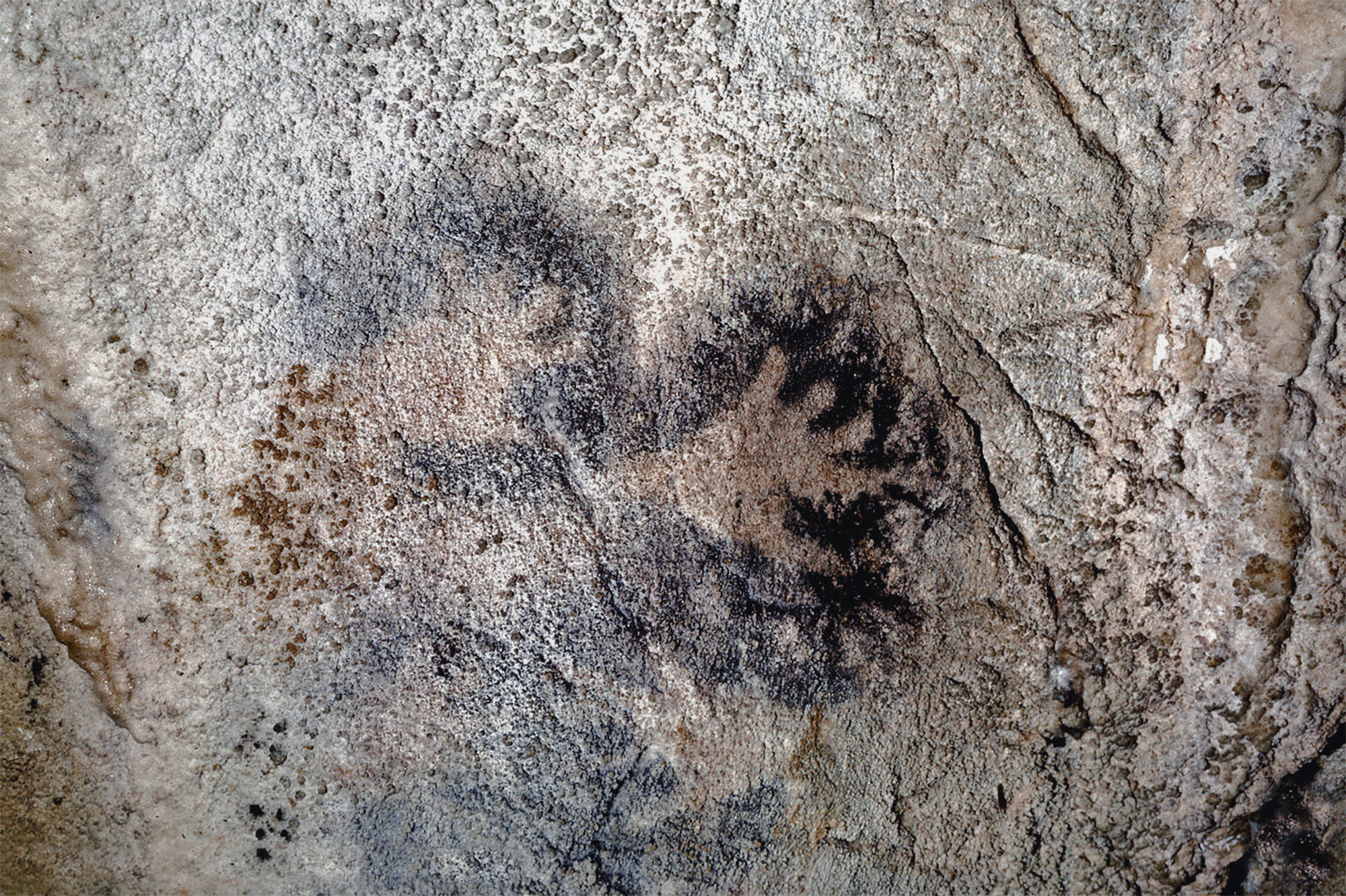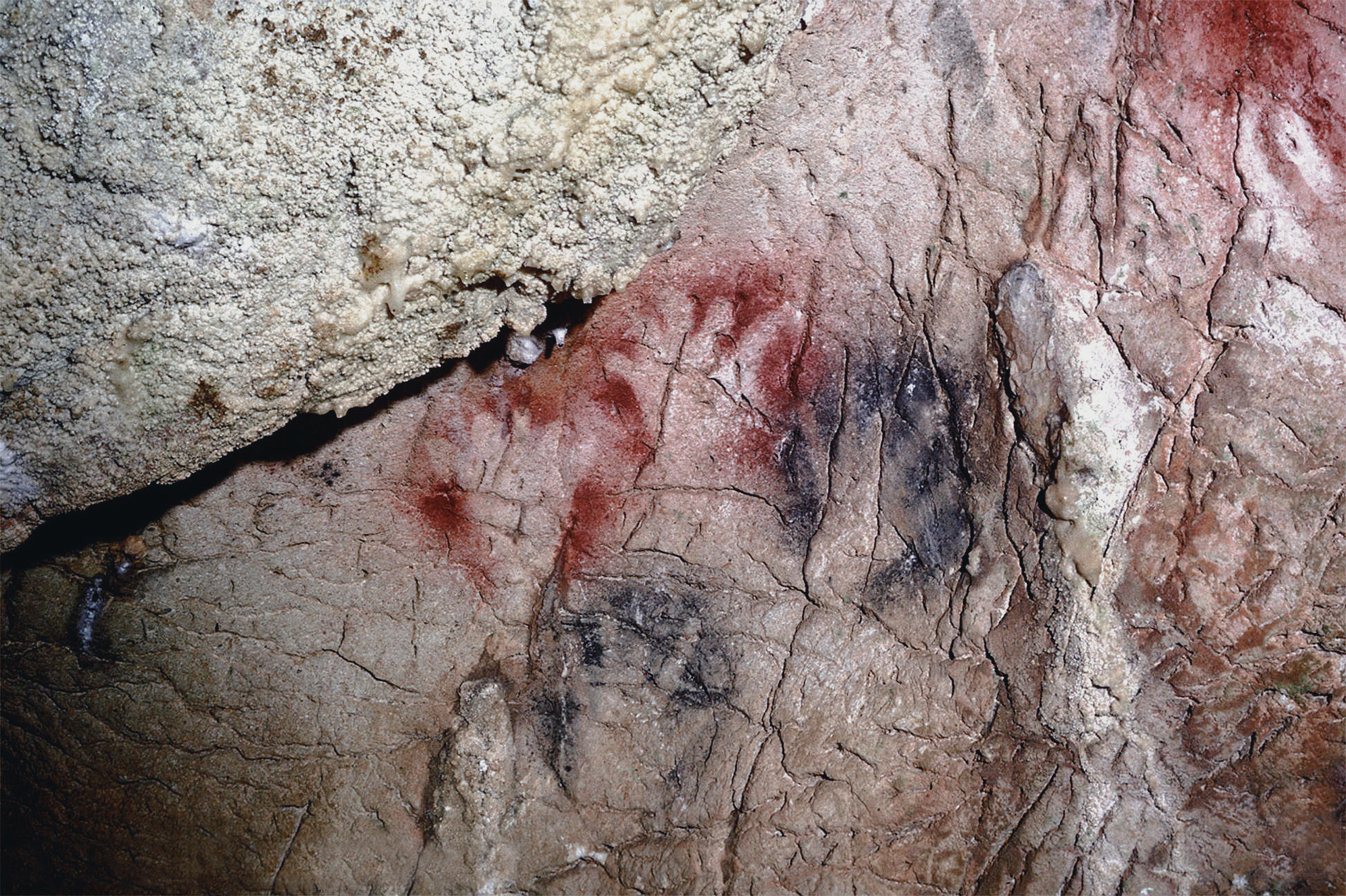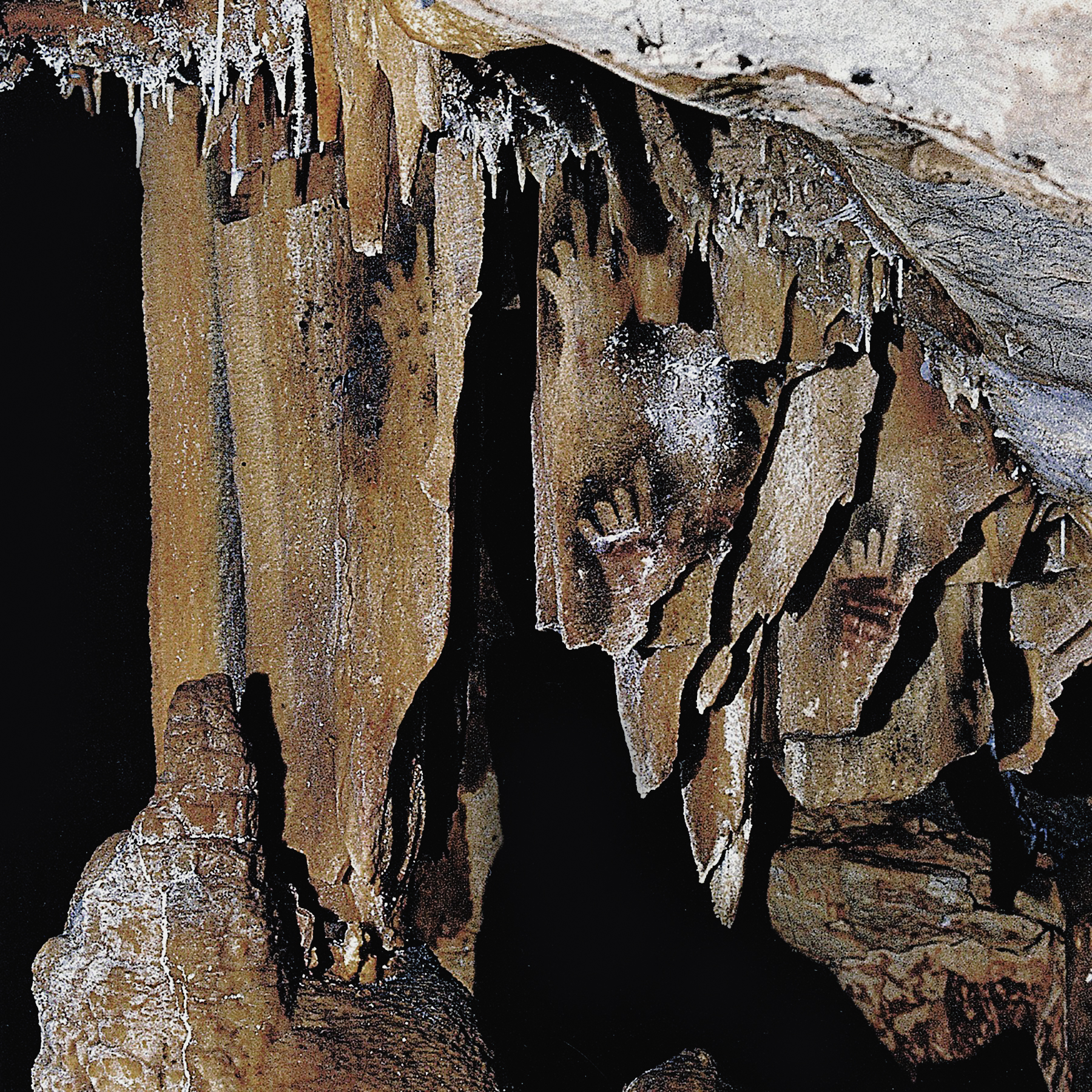


The Caves of Gargas (French: Grottes de Gargas, French pronunciation: [ɡʁɔt də ɡaʁɡas]) in the Pyrenees region of France are known for their cave art from the Upper Paleolithic period - about 27,000 years old. The caves are located near the town of Aventignan in the Hautes-Pyrénées department in south-western France, at the edge of the Haute-Garonne close to Saint-Bertrand-de-Comminges. The caves have yielded evidence of occupation (bones, lithics (stone tools) and portable art) from the Mousterian to the Middle Ages, but it is most famous for its paintings and engravings of the Upper Paleolithic. The two chambers of the caves began to be scientifically explored and documented at the end of the 19th century by Émile Cartailhac (left) and Abbé Henri Breuil (right), but it was Felix Regnault who discovered the hand-print images in 1906.
Many examples of cave art feature hand prints of people with amputated fingers. Some of the art shows examples of people with several stumps on a hand. Archaeologists do not all agree and some say it could be caused by frostbite. Prehistoric humans may have cut off their own fingers as part of a gruesome religious ritual.
Cave art discovered from all over the world features hand-prints outlined with ochre and other ancient pigments. These prints are regularly missing parts of fingers and experts believe the widespread absence of the appendages is most likely as a result of religious sacrifice. Scientists say the missing fingers may also be as a result of the harsh environment in prehistoric times.
Archaeologist Mark Collard of Simon Fraser University in Canada reports in New Scientist that finger amputation was a reasonably common behaviour in many regions in the recent past, for the purposes of religious sacrifice.
A database including sites in Africa, Eurasia, Oceania, and the Americas revealed 121 separate societies which exhibited the same behaviour. At Grotte de Gargas in France, there are 231 hand stencils in total that belong to a group of up to 50 people. Almost half (114) of these are missing one or more digits.
Conversely, some scientists have claimed there may be less painful alternatives to explain the plethora of cave art with amputated fingers, such as bending the fingers, whilst others argue that a definitive answer may never be found.
In the Gargas cave in the Pyrenees mountains of southern France, the prehistoric motifs of hands appear to represent hands that have been injured. So-called 'mutilated' hands can be seen at many other prehistoric rock art sites, but Gargas cave is the most striking example of this phenomenon (114 of the 231 hand images are missing at least one finger segment.) It has been suggested that these missing fingers are the result of accidents, frostbite or ritual mutilation, but a more likely explanation is that their creators deliberately folded away their fingers - hidden fingers under the palm of the hand - to produce specific patterns. Moreover, there are no missing fingers on any of the positive handprints in prehistoric European cave art which seems to rule out the mutilation/frostbite/accident idea.
Researchers believe that Gargas’s hand stencils reflect some kind of communication system - a Stone Age sign language. Language itself originated with hand signs as well as vocalisations, and many societies continue to use a wide range of symbolic hand gestures during hunting, storytelling and rituals alongside – and sometimes in place of – their spoken language. This could also function as a lingua franca between groups that don’t share the same spoken language.
Cosquer cave, located in the Calanque de Morgiou in Marseille, France, with its entrance now located 37m underwater due to the Holocene sea level rise, has examples of this.
According to Dr. Jean Clottes, the hand stencils with incomplete fingers were realized by bending the fingers. Hand stencils with incomplete fingers had until very recently only been found in very few caves, mostly in the Pyrénées (Gargas, Tibiran, Fuente del Trucho). Now, we know that the phenomenon was far more widely represented than had been thought. The now-established fact that roughly at the same time such hand stencils were being made in sites hundreds of miles apart should deal a death blow to the theory of pathologic mutilations: how likely would it be that human groups living at such distances from one another should independently develop the same crippling diseases and should react in the same way by immortalizing them on the walls of the caves by means of the same techniques?
→ Subscribe free to the Bradshaw Foundation YouTube Channel
→ Hand Paintings in Rock Art
→ Hand Paintings in World Rock Art
→ Cueva de las Manos | Cave of the Hands
→ The Role of Hand Prints in the Rock Art of the South-Western Cape
→ Handprints in the Rock Art & Tribal Art of Central India
→ Hand Stencils in Chhattisgarh India
→ Hand prints found in Altamira
→ Handpas Project
→ Prehistoric Hand Paintings in the Cave of Maltravieso
→ Hand stencils and their missing fingers
→ Bradshaw Foundation
→ Rock Art Network
